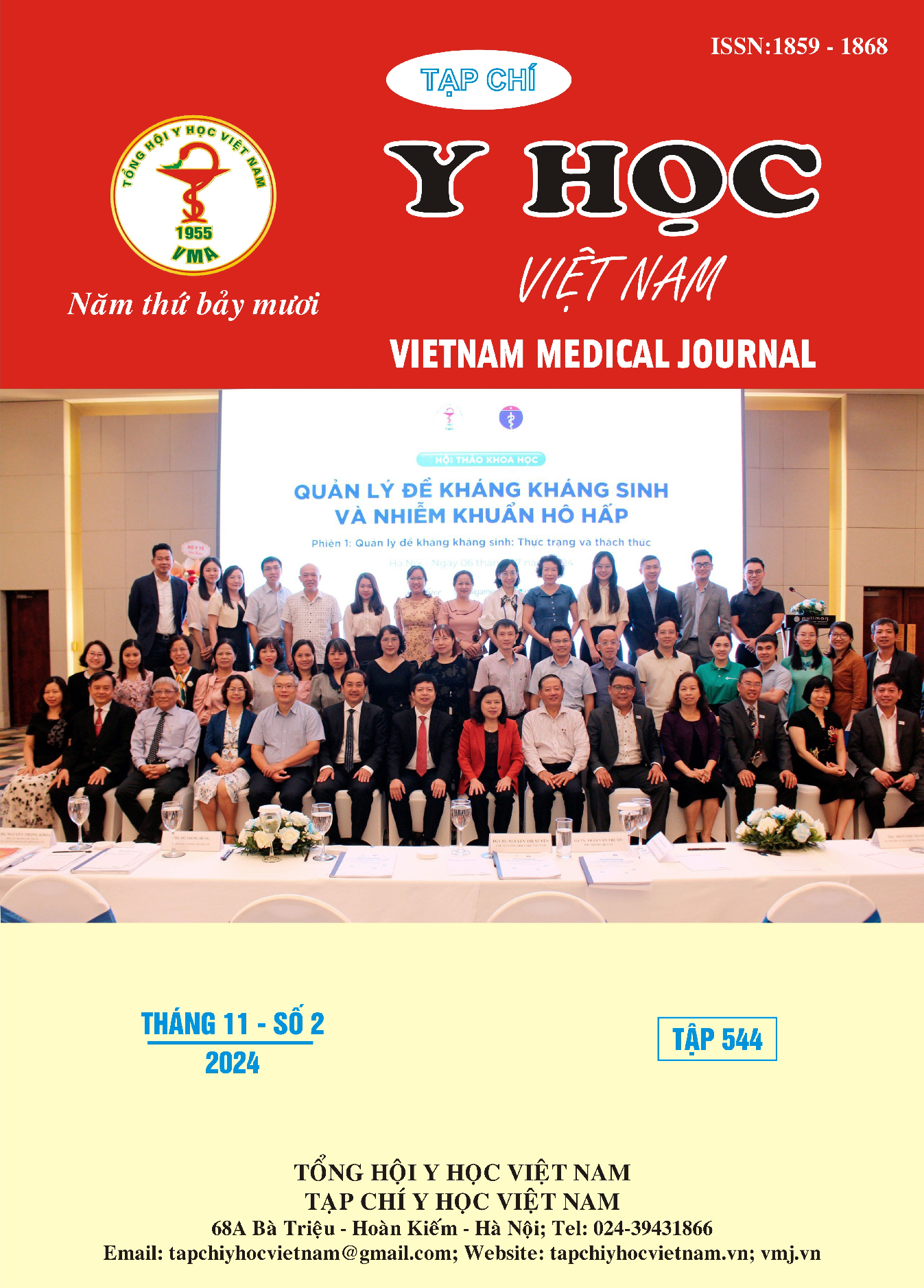THE IMPACT OF BODY MASS INDEX (BMI) ON HEMODYNAMIC MEASUREMENTS BY THORACIC BIOIMPEDENCE (ELECTRICAL CARDIOMETRY) IN SEPTIC SHOCK
Main Article Content
Abstract
Objective: To evaluate the effect of Body Mass Index (BMI) on the results of Cardiac Index (CI) measurement by the thoracic impedance method (Electrical cardiometry) compared with the PiCCO method in septic shock patients at Bach Mai Hospital. Research subjects: septic shock patients with PICCO placed for hemodynamic monitoring. Research method: Prospective descriptive study on patients diagnosed with septic shock with PiCCO placed admitted to the Intensive Care Center - Bach Mai Hospital from November 1, 2022 to October 31, 2023. Results: There were 32 patients eligible to participate in the study, resulting in 220 pairs of data. The measurement results for the low BMI group (BMI <18.5) obtained 14 pairs of data, for the average BMI group obtained 112 pairs of data and for the obese group (BMI ≥ 25) obtained 94 pairs of data. The percent error of the CI indexes in patients with low and average BMI were 16.2% and 15.8% respectively, towards the similarity of these two methods. In patients with high BMI, the similarity was worse with the percent error of 32%. Cardiac index measured in patients with low and average BMI were strongly correlated and statistically significant throughout the study with correlation coefficients r = 0.9 and 0.94 p < 0.01. Conclusion: Cardiac index (CI) measured by EC in obese patients (BMI≥25) was less correlated and less similar than the results obtained by PiCCO thermodilution.
Article Details
Keywords
septic shock, hemodynamic investigation, EC, thermodilution, Electrical Cardiometry, PiCCO
References
2. Piechota M, Irzmański R, Banach M, et al. Original paper Can impedance cardiography be routinely applied in patients with sepsis and severe sepsis? Arch Med Sci. 2006;2(2):114-121.
3. Petter H, Erik A, Björn E, Göran R. Measurement of cardiac output with non-invasive Aesculon impedance versus thermodilution. Clin Physiol Funct Imaging. 2011;31(1):39-47. doi:10.1111/j.1475-097X.2010.00977.x
4. Bernstein DP, Osypka MJ. Apparatus and method for determining an approximation of the stroke volume and the cardiac output of the heart. US Pat. Published online 2001:No. 6,511,438
5. Wong J, Agus MSD, Steil GM. Cardiac parameters in children recovered from acute illness as measured by electrical cardiometry and comparisons to the literature. J Clin Monit Comput. 2013;27(1):81-91. doi:10.1007/s10877-012-9401-x
6. Wong J, Agus MSD, Steil GM. Cardiac parameters in children recovered from acute illness as measured by electrical cardiometry and comparisons to the literature. J Clin Monit Comput. 2013;27(1):81-91. doi:10.1007/s10877-012-9401-x
7. Heringlake M, Handke U, Hanke T, et al. Lack of agreement between thermodilution and electrical velocimetry cardiac output measurements. Intensive Care Med. 2007;33(12): 2168-2172. doi:10.1007/s00134-007-0828-3
8. Van Der Meer, Bulder E. R, De Vries, Van Wyck. Impedance cardiography in cardiac surgery patients: Abnormal body weight gives unreliable cardiac output measurements. J Clin Monit. Published online January 1996:12(1):5-9
9. Altamirano-Diaz L, Welisch E, Dempsey AA, Park TS, Grattan M, Norozi K. Non-invasive measurement of cardiac output in children with repaired coarctation of the aorta using electrical cardiometry compared to transthoracic Doppler echocardiography. Physiol Meas. 2018;39(5): 055003. doi:10.1088/1361-6579/aac02b


